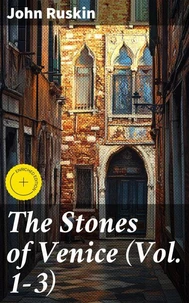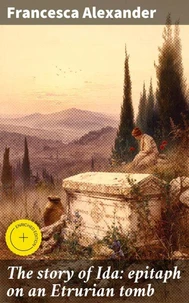Love's Meinie: Three Lectures on Greek and English Birds
Par :Formats :
Disponible dans votre compte client Decitre ou Furet du Nord dès validation de votre commande. Le format ePub est :
- Compatible avec une lecture sur My Vivlio (smartphone, tablette, ordinateur)
- Compatible avec une lecture sur liseuses Vivlio
- Pour les liseuses autres que Vivlio, vous devez utiliser le logiciel Adobe Digital Edition. Non compatible avec la lecture sur les liseuses Kindle, Remarkable et Sony
 , qui est-ce ?
, qui est-ce ?Notre partenaire de plateforme de lecture numérique où vous retrouverez l'ensemble de vos ebooks gratuitement
Pour en savoir plus sur nos ebooks, consultez notre aide en ligne ici
- Nombre de pages410
- FormatePub
- ISBN859-65--4738025-2
- EAN8596547380252
- Date de parution16/09/2022
- Protection num.Digital Watermarking
- Taille627 Ko
- Infos supplémentairesepub
- ÉditeurDIGICAT
Résumé
In "Love's Meinie: Three Lectures on Greek and English Birds, " John Ruskin employs a unique combination of lyrical prose and meticulous observation to explore the intricate relationships between avian life, nature, and art. Through his three lectures, Ruskin delves into the symbolism and aesthetics of birds in both Greek and English literature, revealing how these creatures embody complexity that reflects broader human experiences and emotions.
His work is characterized by its rich imagery, passionate rhetoric, and an underlying moral philosophy, engaging with the cultural significance of ornithology within Victorian society while critiquing the industrialized disconnection from nature. John Ruskin (1819-1900) was a leading art critic, social thinker, and advocate for environmental stewardship in the 19th century. His early fascination with nature blossomed into an impassioned belief in its relevance to art and ethics, which is evident in this work.
Ruskin's experiences as a traveler and his extensive knowledge of art history underpinned his desire to cultivate a deeper appreciation for the natural world, especially through the lens of literature and its representation of flora and fauna. "Love's Meinie" is a compelling read for those interested in the intersection of art, literature, and nature. Ruskin's eloquent prose invites readers to reflect on the beauty and significance of birds as symbols of artistic inspiration and spiritual truth.
This text is essential for scholars, nature lovers, and anyone seeking to rekindle their connection with the avian world.
His work is characterized by its rich imagery, passionate rhetoric, and an underlying moral philosophy, engaging with the cultural significance of ornithology within Victorian society while critiquing the industrialized disconnection from nature. John Ruskin (1819-1900) was a leading art critic, social thinker, and advocate for environmental stewardship in the 19th century. His early fascination with nature blossomed into an impassioned belief in its relevance to art and ethics, which is evident in this work.
Ruskin's experiences as a traveler and his extensive knowledge of art history underpinned his desire to cultivate a deeper appreciation for the natural world, especially through the lens of literature and its representation of flora and fauna. "Love's Meinie" is a compelling read for those interested in the intersection of art, literature, and nature. Ruskin's eloquent prose invites readers to reflect on the beauty and significance of birds as symbols of artistic inspiration and spiritual truth.
This text is essential for scholars, nature lovers, and anyone seeking to rekindle their connection with the avian world.
In "Love's Meinie: Three Lectures on Greek and English Birds, " John Ruskin employs a unique combination of lyrical prose and meticulous observation to explore the intricate relationships between avian life, nature, and art. Through his three lectures, Ruskin delves into the symbolism and aesthetics of birds in both Greek and English literature, revealing how these creatures embody complexity that reflects broader human experiences and emotions.
His work is characterized by its rich imagery, passionate rhetoric, and an underlying moral philosophy, engaging with the cultural significance of ornithology within Victorian society while critiquing the industrialized disconnection from nature. John Ruskin (1819-1900) was a leading art critic, social thinker, and advocate for environmental stewardship in the 19th century. His early fascination with nature blossomed into an impassioned belief in its relevance to art and ethics, which is evident in this work.
Ruskin's experiences as a traveler and his extensive knowledge of art history underpinned his desire to cultivate a deeper appreciation for the natural world, especially through the lens of literature and its representation of flora and fauna. "Love's Meinie" is a compelling read for those interested in the intersection of art, literature, and nature. Ruskin's eloquent prose invites readers to reflect on the beauty and significance of birds as symbols of artistic inspiration and spiritual truth.
This text is essential for scholars, nature lovers, and anyone seeking to rekindle their connection with the avian world.
His work is characterized by its rich imagery, passionate rhetoric, and an underlying moral philosophy, engaging with the cultural significance of ornithology within Victorian society while critiquing the industrialized disconnection from nature. John Ruskin (1819-1900) was a leading art critic, social thinker, and advocate for environmental stewardship in the 19th century. His early fascination with nature blossomed into an impassioned belief in its relevance to art and ethics, which is evident in this work.
Ruskin's experiences as a traveler and his extensive knowledge of art history underpinned his desire to cultivate a deeper appreciation for the natural world, especially through the lens of literature and its representation of flora and fauna. "Love's Meinie" is a compelling read for those interested in the intersection of art, literature, and nature. Ruskin's eloquent prose invites readers to reflect on the beauty and significance of birds as symbols of artistic inspiration and spiritual truth.
This text is essential for scholars, nature lovers, and anyone seeking to rekindle their connection with the avian world.




